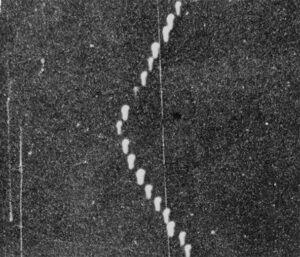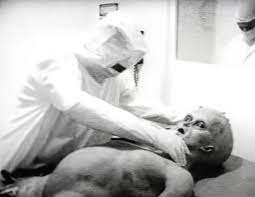The Advanced Aerospace Threat Identification Program (AATIP) is a formerly secretive Pentagon program funded by the United States government. Its main goal was to study unidentified flying objects (UFOs), now more commonly referred to as unidentified aerial phenomena (UAPs). While the existence of AATIP has stirred up considerable public and media interest, the program’s intricate details and discoveries offer a fascinating glimpse into how the U.S. government handles phenomena that defy conventional explanation.
Origins and Funding

AATIP was initiated in 2007, largely at the behest of then-Senator Harry Reid of Nevada, a state with a long history of UFO sightings and home to the infamous Area 51. The program was funded with approximately $22 million of taxpayer money, sourced from the Department of Defense’s black budget. It operated under the Defense Intelligence Agency (DIA) until it was purportedly disbanded in 2012.
Objectives and Operations

The primary objective of AATIP was to investigate and evaluate threats posed by aerial objects that the military could not identify, catalog, or often even track with existing technology. The program sought to determine if these aerial phenomena represented advanced technologies that could pose a threat to U.S. national security.
The operations of AATIP were highly classified, and much of the program’s findings remain undisclosed. However, it is known that the program collected and analyzed reports of UAP encounters, including sightings by military pilots and radar operators. The program also studied videos and radar data that showed aircraft moving in ways that appeared to defy known aerodynamics.
Public Disclosure and Reaction
The existence of AATIP was not widely known until 2017, when several media outlets reported on the program, prompted by the release of several declassified videos of UAP encounters. These reports thrust AATIP into the public eye and led to significant interest in the potential implications of the government’s findings.
The disclosure of AATIP has fueled ongoing debate regarding the existence and nature of UFOs and UAPs. It has raised questions about what the U.S. government knows about these phenomena, how it has responded, and how it should respond in the future. Public reaction has ranged from skepticism to intrigue, with a growing demand for transparency.
Legacy and Continuing Impact

Although AATIP was reportedly discontinued, its legacy lives on in renewed efforts to understand and investigate UAPs. In 2020, the U.S. Department of Defense officially announced the establishment of the Unidentified Aerial Phenomena Task Force (UAPTF), the successor to AATIP. The UAPTF aims to “detect, analyze, and catalog UAPs that could potentially pose a threat to U.S. national security.”
The ongoing interest and governmental focus on UAPs suggest that the phenomena are being taken seriously at the highest levels of government. The continuation of such programs underscores the potential threat and importance of understanding what these unidentified objects may represent.
Future Successor Unknown
The Advanced Aerospace Threat Identification Program represents a significant chapter in the ongoing story of humanity’s encounter with the unknown. Whether or not definitive answers about UAPs come from the continuation of such research, the efforts of AATIP and its successors ensure that the phenomena are not ignored. With increased public awareness and demand for information, it is likely that further details and findings may emerge, providing deeper insights into the mysterious objects that navigate our skies.










